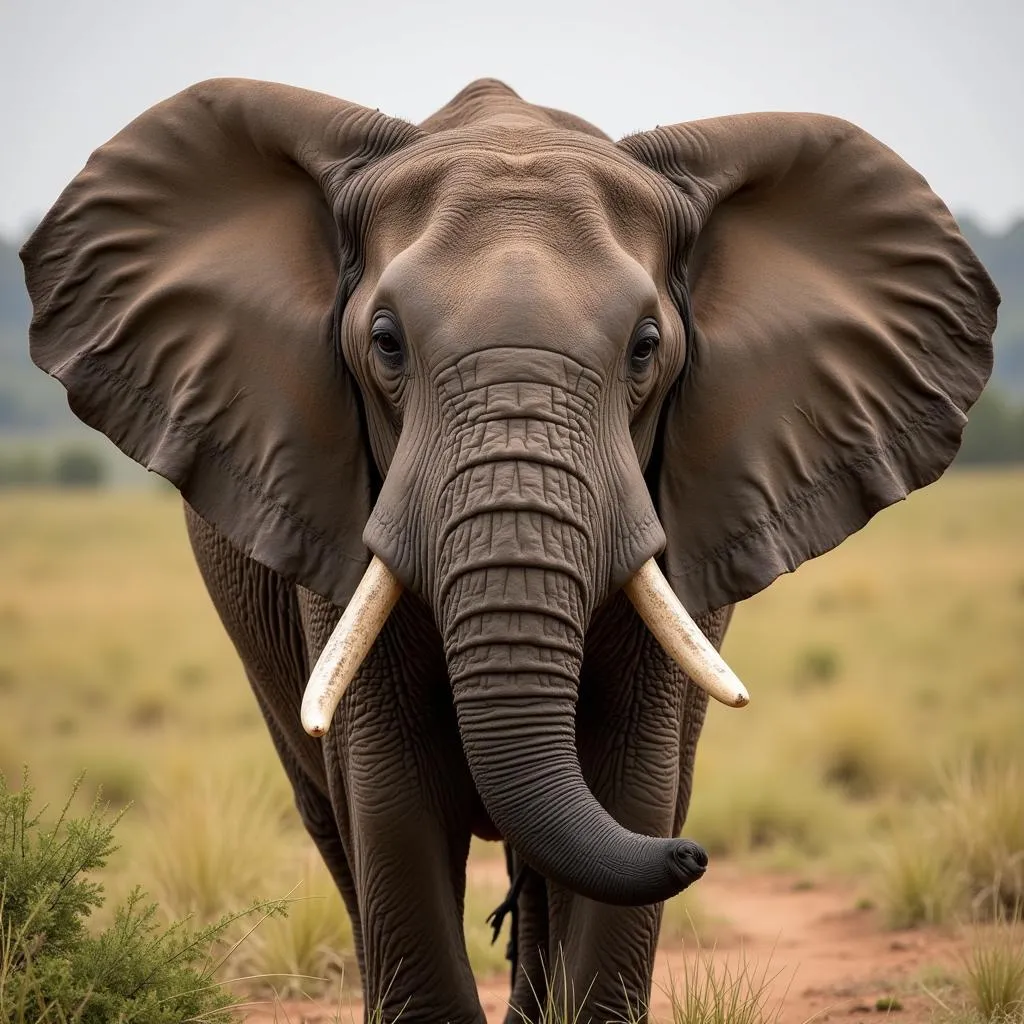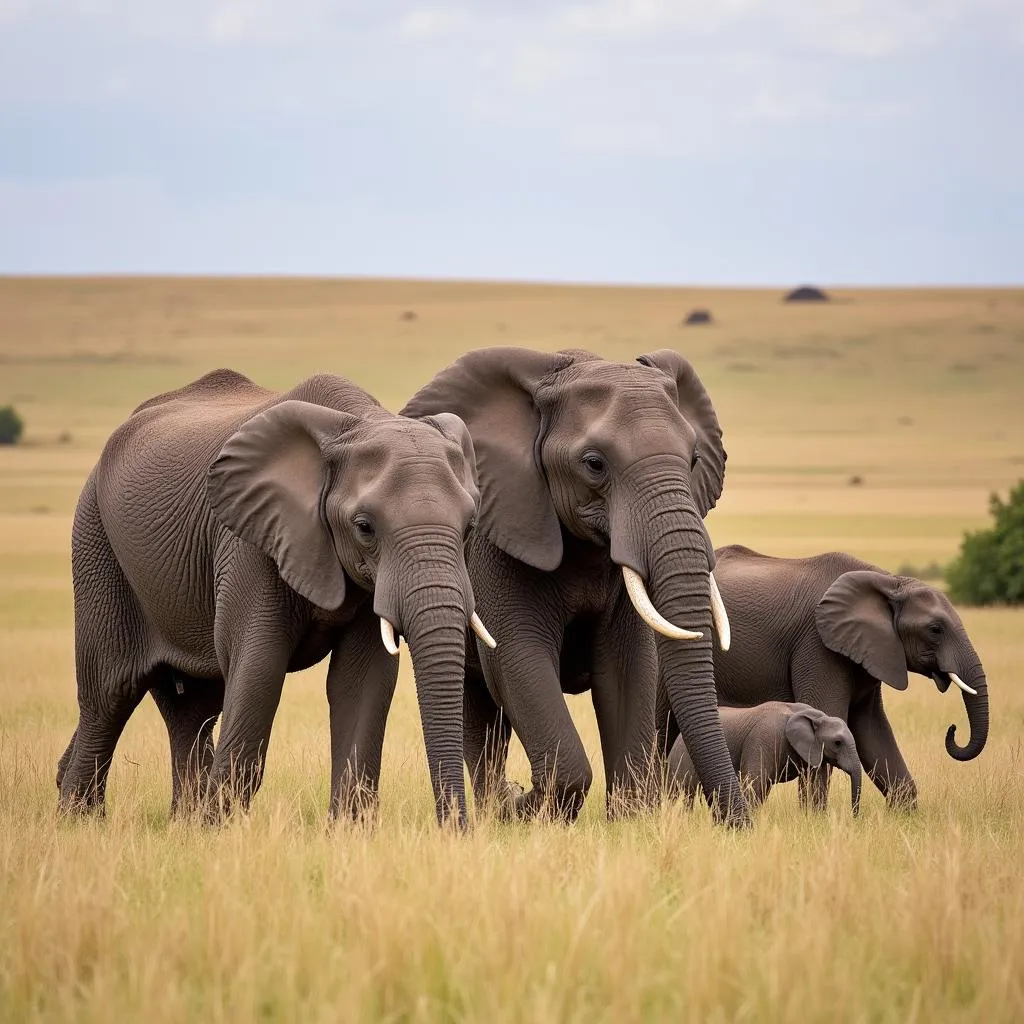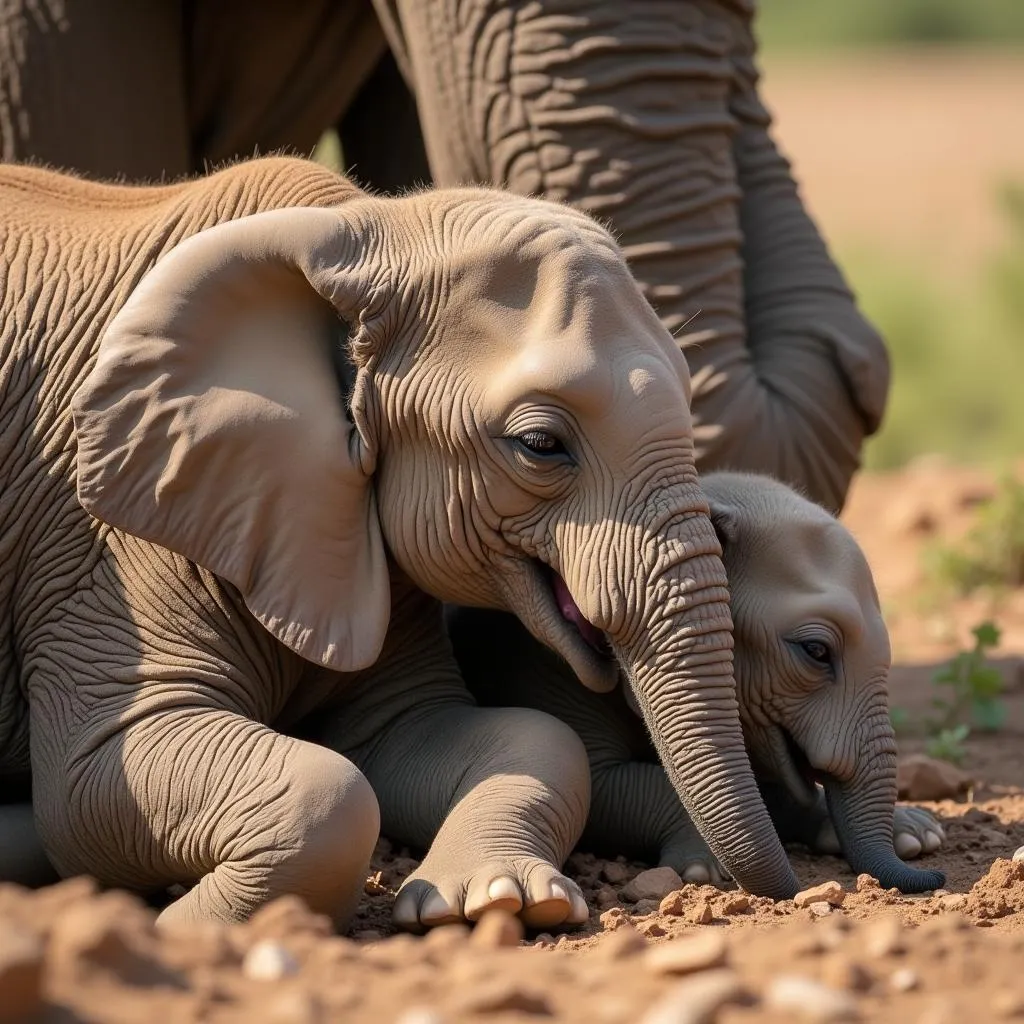Unveiling the African Bush Elephant Genus: A Closer Look
The African Bush Elephant Genus, scientifically classified as Loxodonta, embodies the epitome of grandeur and power in the animal kingdom. These majestic creatures, roaming the savannas and forests of Africa, captivate our imagination and inspire awe with their sheer size and intricate social structures. Join us as we delve into the fascinating world of the African bush elephant, exploring their unique characteristics, ecological importance, and the challenges they face in a rapidly changing world.
Distinguishing Features of the African Bush Elephant
The African bush elephant (Loxodonta africana) stands apart from its Asian counterparts and the African forest elephant with its distinct physical attributes:
-
Imposing Size: African bush elephants claim the title of the largest land animals on Earth. Males can reach heights of up to 3.3 meters (11 feet) at the shoulder and weigh up to 6,000 kilograms (13,200 pounds). Females, while slightly smaller, still command an impressive presence.
-
Tusks of Ivory: Both male and female African bush elephants possess iconic tusks, elongated incisor teeth that protrude from their upper jaws. These ivory tusks, prized for their beauty and durability, have sadly become a source of conflict, fueling poaching and the illegal ivory trade.
-
Large, Fan-Shaped Ears: The African bush elephant’s enormous ears, shaped like the continent of Africa itself, serve a vital purpose beyond their visual impact. Richly supplied with blood vessels, these ears act as efficient radiators, helping to regulate body temperature in the scorching African heat.
 African Bush Elephant's Ears
African Bush Elephant's Ears
The Social Fabric of African Bush Elephant Society
African bush elephants are highly social animals, living in complex, matriarchal herds led by an experienced female, the matriarch. These herds, ranging in size from a few individuals to over 100 elephants, offer a supportive and nurturing environment for raising young:
-
The Matriarch’s Wisdom: The matriarch, typically the oldest and most knowledgeable female, guides the herd’s movements, determines foraging grounds, and makes crucial decisions that ensure the group’s survival. Her experience and leadership are essential, especially during times of drought or when navigating unfamiliar territory.
-
Strong Family Bonds: Female elephants maintain close bonds with their offspring throughout their lives, with multiple generations often traveling together within the herd. These strong family ties foster a sense of community and provide young elephants with essential guidance and protection as they mature.
-
Communication is Key: African bush elephants communicate through a variety of vocalizations, including rumbles, trumpets, and screams, each conveying specific messages. They also utilize infrasound, low-frequency sounds that travel long distances, to communicate with other herds or signal danger.
 African Bush Elephant Herd
African Bush Elephant Herd
Ecological Role: Shaping the African Landscape
African bush elephants play a crucial role in maintaining the delicate balance of their ecosystems. Their browsing habits and movements shape the landscape, influencing plant diversity and creating habitats for other species:
-
Ecosystem Engineers: As large herbivores, African bush elephants consume vast quantities of vegetation, clearing dense undergrowth and creating pathways that benefit smaller animals. Their dung, rich in nutrients, disperses seeds across wide areas, promoting plant growth and diversity.
-
Water Resource Managers: Elephants often dig for water in dry riverbeds, creating waterholes that provide a lifeline for other animals during periods of drought. Their presence can alter the flow of water, creating wetlands and expanding habitats for aquatic life.
-
Keystone Species: The ecological impact of African bush elephants extends far beyond their immediate surroundings. Their presence or absence can significantly influence the structure and diversity of entire ecosystems, making them a keystone species essential for the health and resilience of the African savanna.
Conservation Concerns: Protecting a Threatened Giant
Despite their size and strength, African bush elephant populations face numerous threats, primarily driven by human activities:
-
Poaching for Ivory: The illegal ivory trade poses a significant threat to African bush elephants. Despite international efforts to combat poaching, demand for ivory, particularly in Asian markets, continues to fuel this destructive trade.
-
Habitat Loss and Fragmentation: Human population growth and expanding agricultural activities encroach upon elephant habitats, leading to habitat loss and fragmentation. This forces elephants into closer contact with humans, increasing the risk of human-wildlife conflict.
-
Climate Change: The impacts of climate change, including more frequent and severe droughts, exacerbate existing threats to African bush elephants. Reduced water availability and altered vegetation patterns can negatively affect elephant populations and their delicate ecosystems.
 African Bush Elephant Calf
African Bush Elephant Calf
Conclusion: Securing a Future for the African Bush Elephant
The future of the African bush elephant rests in our hands. By supporting conservation efforts, raising awareness about the threats they face, and promoting sustainable practices that mitigate human-wildlife conflict, we can help ensure that these magnificent creatures continue to roam the African landscape for generations to come.


